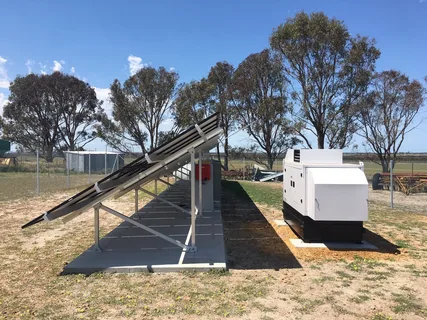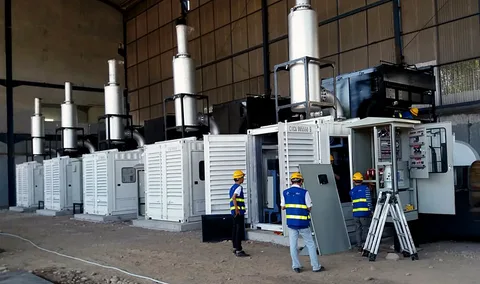Are you tired of paying high electricity bills? Do you want to break free from the grid and make the switch to a more sustainable form of power? Stand Alone power systems are a great way to reduce your electricity bills and take control of your energy usage. In this blog post, we’ll discuss how stand-alone power systems can save you money and help you become more energy independent.
What Are Stand-Alone Power Systems?
Stand-Alone power systems, also known as off-grid systems, are self-sufficient power generation systems that operate independently of the main electricity grid. They are designed to provide electricity to households, businesses, and other establishments without the need for a connection to the grid. These systems typically include a combination of renewable energy sources such as solar panels, wind turbines, or hydroelectric generators, as well as energy storage devices like batteries.
Stand-Alone power systems offer a range of benefits, including lower electricity bills, increased energy independence, and reduced environmental impact. By generating and storing their own electricity, users can significantly reduce their reliance on grid electricity and avoid the rising costs associated with it. Additionally, Stand-Alone power systems provide a sustainable and renewable alternative to traditional energy sources, contributing to a greener and cleaner environment. Moreover, these systems often require minimal maintenance, leading to lower long-term costs compared to grid-connected systems.
The benefits of using Stand-Alone power systems
Stand-Alone power systems offer a multitude of benefits that make them a wise investment for anyone looking to reduce their reliance on the grid and save money on electricity bills. Firstly, these systems provide the opportunity for significantly lower electricity bills. By generating and storing your own electricity, you can avoid the rising costs of grid electricity and become more in control of your energy usage.
In addition to lower bills, Stand-Alone power systems offer increased energy independence. You no longer have to rely on the stability or availability of the grid, as you have your own power generation system. This gives you peace of mind during power outages or disruptions, and allows you to become self-sufficient in your energy needs.
Furthermore, Stand-Alone power systems are an environmentally friendly option. By utilizing renewable energy sources like solar panels or wind turbines, you reduce your carbon footprint and contribute to a greener future. Not only will you be saving money, but you’ll also be doing your part to combat climate change.
Lastly, Stand-Alone power systems often come with lower maintenance costs compared to grid-connected systems. They are designed to be reliable and require minimal upkeep, resulting in long-term cost savings.
Lower electricity bills
Stand-Alone power systems can provide a significant reduction in your electricity bills. By generating and storing your own electricity, you can avoid the rising costs of grid electricity and take control of your energy usage. Imagine not having to worry about monthly electricity bills or rate increases! With a Stand-Alone power system, you have the power to determine how much energy you use and when you use it.
The key to lowering your electricity bills with a Stand-Alone power system lies in utilizing renewable energy sources such as solar panels, wind turbines, or hydroelectric generators. These sources harness the power of nature to generate electricity for your home or business. Not only are they cost-effective, but they also have a minimal impact on the environment.
 Increased energy independence
Increased energy independence
One of the key benefits of using Stand-Alone power systems is the increased energy independence they offer. No longer do you have to rely on the stability or availability of the grid – you have your own power generation system. This gives you peace of mind during power outages or disruptions and allows you to become self-sufficient in your energy needs.
Imagine never having to worry about being affected by blackouts or energy shortages again. With a Stand-Alone power system, you have the power to keep your lights on, your appliances running, and your business operational, even when the grid goes down. You’re in control.
Not only does this increased energy independence provide convenience and peace of mind, but it also allows you to make a positive impact on the environment. By reducing your reliance on grid electricity, you are reducing your carbon footprint and contributing to a greener future. You’re taking an active step towards combating climate change and creating a more sustainable world for future generations.
Environmentally friendly option
When it comes to making choices that benefit both your wallet and the planet, Stand-Alone power systems are a no-brainer. These systems offer an environmentally friendly option for power generation, using renewable energy sources like solar panels and wind turbines. By harnessing the power of nature, Stand-Alone power systems reduce your carbon footprint and contribute to a greener future.
Unlike traditional energy sources that rely on fossil fuels, Stand-Alone power systems emit little to no greenhouse gases. This means that by using these systems, you’re actively helping combat climate change and creating a more sustainable world for future generations.
Not only are Stand-Alone power systems eco-friendly, but they also provide numerous benefits for you as the consumer. By generating and storing your own electricity, you become less reliant on the grid and can save money on your energy bills. It’s a win-win situation – you reduce your environmental impact while putting more money back in your pocket.
Lower maintenance costs
Lower maintenance costs are one of the many advantages of using Stand-Alone power systems. These systems are designed to be reliable and require minimal upkeep, resulting in long-term cost savings for users. With grid-connected systems, there can be maintenance and repair costs associated with power lines, transformers, and other components. However, Stand-Alone power systems eliminate the need for these infrastructure investments, reducing the potential for high maintenance expenses.
By choosing a Stand-Alone power system, you can save money on maintenance while still enjoying a reliable source of electricity. These systems are built to withstand harsh weather conditions and have a longer lifespan compared to traditional grid-connected systems. Additionally, most components of Stand-Alone power systems are self-contained and easily replaceable, further reducing the need for expensive maintenance.
Considerations before installing Stand Alone Power Systems
Considering installing Stand Alone power systems? Before you make the switch, there are a few key considerations to keep in mind. First and foremost, you need to evaluate your energy needs and usage. How much electricity do you typically consume? Are you planning to use the Stand-Alone power system for your entire property or just a specific area? Understanding your energy requirements will help determine the size and capacity of the system you need.
Next, think about the available renewable energy resources in your location. Is your property suitable for solar panels or wind turbines? Consider the amount of sunlight or wind you receive throughout the year, as this will impact the efficiency of your system. It’s also important to assess the cost and feasibility of installing the necessary infrastructure for your chosen renewable energy source.
Another consideration is energy storage. Stand-Alone power systems typically include batteries or other storage devices to store excess energy for use during low-generation periods. You’ll need to determine the right size and type of storage system based on your energy consumption patterns.
Additionally, it’s crucial to understand the upfront costs and potential financial incentives or rebates available for Stand-Alone power systems. Research the cost of installation, maintenance, and any ongoing fees or charges associated with your system. Take into account the potential savings on electricity bills and the payback period for your investment.
Finally, consider the long-term maintenance and support requirements of your Stand-Alone power system. Are you comfortable with handling basic maintenance tasks yourself, or will you require professional assistance? Understanding the maintenance needs of your system will help ensure its optimal performance and longevity.
Types of Stand-Alone power systems available
Stand-Alone power systems come in various types to suit different energy needs and locations. One popular option is a solar power system, which uses solar panels to convert sunlight into electricity. These systems are especially effective in areas with ample sunlight and can provide a reliable source of power. Another option is a wind power system, which utilizes wind turbines to generate electricity. This is a great choice for locations with consistent and strong winds.
Hydroelectric power systems are another option, using the power of flowing or falling water to generate electricity. These systems are ideal for properties near a water source such as a river or stream. Finally, there are hybrid systems that combine multiple renewable energy sources, such as solar panels and wind turbines, to ensure a more reliable and consistent power supply. The type of Stand-Alone power system you choose will depend on your energy needs, location, and available resources. It’s important to consider these factors before making a decision to ensure that you select the best system for your specific circumstances.
FAQs
Have some questions about Stand-Alone power systems? Don’t worry, we’ve got you covered! Here are some frequently asked questions to help you understand this innovative power solution:
Q: What is a Stand-Alone power system?
A: A Stand-Alone power system, also known as an off-grid system, is a self-sufficient power generation system that operates independently of the main electricity grid. It uses renewable energy sources like solar panels, wind turbines, or hydroelectric generators, along with energy storage devices like batteries, to provide electricity to homes and businesses without the need for a connection to the grid.
Q: Can a Stand-Alone power system completely replace grid electricity?
A: Yes, a well-designed and properly sized Stand-Alone power system can provide enough electricity to meet your needs and completely replace grid electricity. By generating and storing your own electricity, you can become completely energy independent.
Q: How much does a Stand-Alone power system cost?
A: The cost of a Stand-Alone power system can vary depending on factors such as the size of the system, the renewable energy sources used, and the location of your property. It’s best to consult with a professional to get an accurate estimate for your specific needs.
Conclusion
Stand-Alone power systems offer a range of benefits that can significantly improve your energy usage and save you money. By generating and storing your own electricity, you can reduce your reliance on the grid and avoid the rising costs associated with it. This not only lowers your electricity bills but also gives you greater control over your energy usage.



